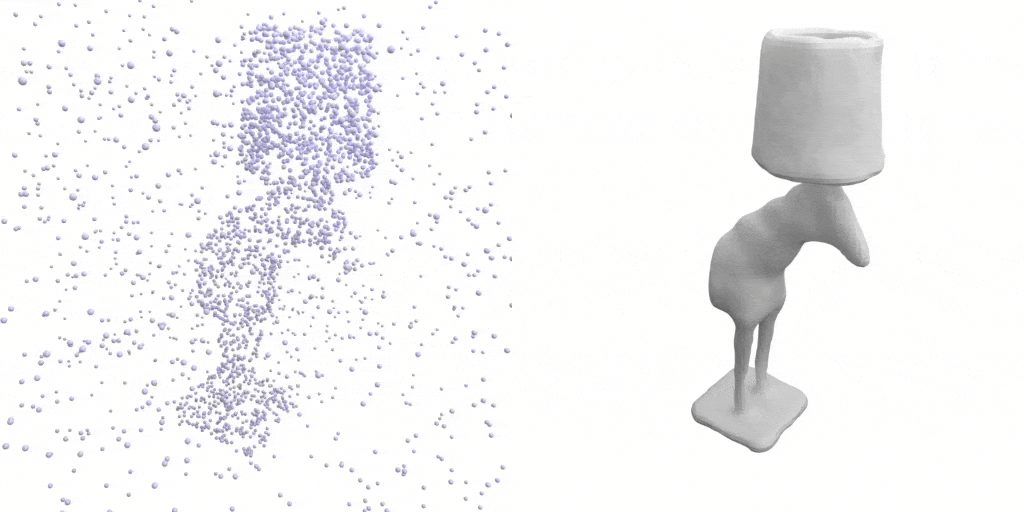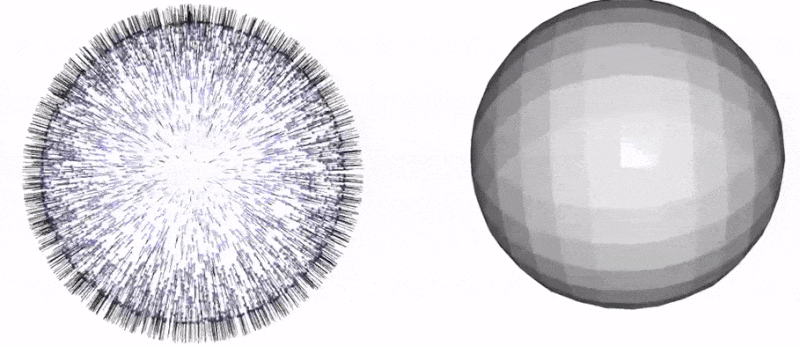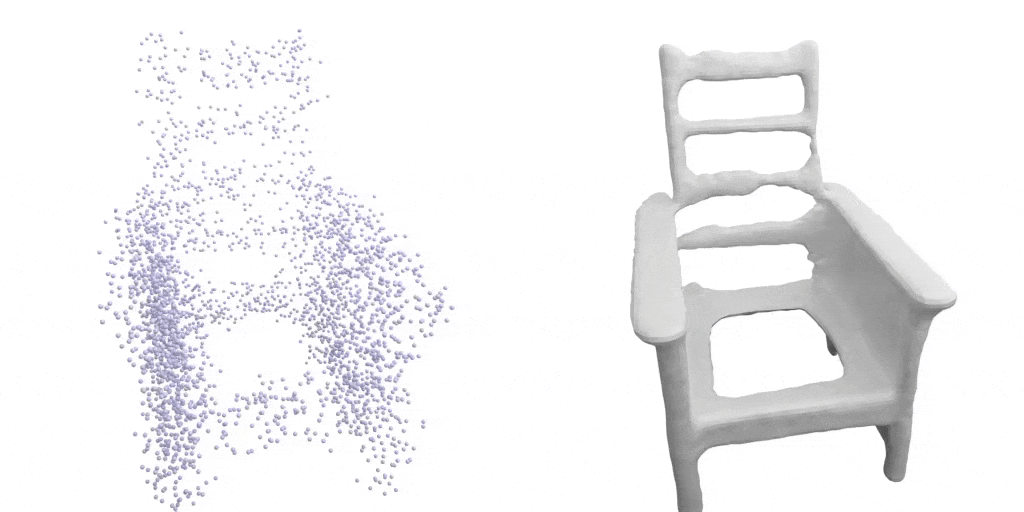This repository contains the implementation of the paper:
Shape As Points: A Differentiable Poisson Solver
Songyou Peng, Chiyu "Max" Jiang, Yiyi Liao, Michael Niemeyer, Marc Pollefeys and Andreas Geiger
NeurIPS 2021 (Oral)
If you find our code or paper useful, please consider citing
@inproceedings{Peng2021SAP,
author = {Peng, Songyou and Jiang, Chiyu "Max" and Liao, Yiyi and Niemeyer, Michael and Pollefeys, Marc and Geiger, Andreas},
title = {Shape As Points: A Differentiable Poisson Solver},
booktitle = {Advances in Neural Information Processing Systems (NeurIPS)},
year = {2021}}First you have to make sure that you have all dependencies in place. The simplest way to do so, is to use anaconda.
You can create an anaconda environment called sap using
conda env create -f environment.yaml
conda activate sap
Next, you should install PyTorch3D (>=0.5) yourself from the official instruction.
And install PyTorch Scatter:
conda install pytorch-scatter -c pygFirst, run the script to get the demo data:
bash scripts/download_demo_data.shYou can now quickly test our code on the data shown in the teaser. To this end, simply run:
python optim_hierarchy.py configs/optim_based/teaser.yamlThis script should create a folder out/demo_optim where the output meshes and the optimized oriented point clouds under different grid resolution are stored.
To visualize the optimization process on the fly, you can set o3d_show: Frue in configs/optim_based/teaser.yaml.
You can also test SAP on another application where we can reconstruct from unoriented point clouds with either large noises or outliers with a learned network.
For the point clouds with large noise as shown above, you can run:
python generate.py configs/learning_based/demo_large_noise.yamlThe results can been found at out/demo_shapenet_large_noise/generation/vis.
 As for the point clouds with outliers, you can run:
As for the point clouds with outliers, you can run:
python generate.py configs/learning_based/demo_outlier.yamlYou can find the reconstrution on out/demo_shapenet_outlier/generation/vis.
We have different dataset for our optimization-based and learning-based settings.
Here we consider the following dataset:
- Thingi10K (synthetic)
- Surface Reconstruction Benchmark (SRB) (real scans)
- MPI Dynamic FAUST (real scans)
Please cite the corresponding papers if you use the data.
You can download the processed dataset (~200 MB) by running:
bash scripts/download_optim_data.shWe train and evaluate on ShapeNet. You can download the processed dataset (~220 GB) by running:
bash scripts/download_shapenet.shAfter, you should have the dataset in data/shapenet_psr folder.
Alternatively, you can also preprocess the dataset yourself. To this end, you can:
- first download the preprocessed dataset (73.4 GB) by running the script from Occupancy Networks.
- check
scripts/process_shapenet.py, modify the base path and run the code
For our optimization-based setting, you can consider running with a coarse-to-fine strategy:
python optim_hierarchy.py configs/optim_based/CONFIG.yamlWe start from a grid resolution of 32^3, and increase to 64^3, 128^3 and finally 256^3.
Alternatively, you can also run on a single resolution with:
python optim.py configs/optim_based/CONFIG.yamlYou might need to modify the CONFIG.yaml accordingly.
To generate meshes using a trained model, use
python generate.py configs/learning_based/CONFIG.yamlwhere you replace CONFIG.yaml with the correct config file.
The easiest way is to use a pre-trained model. You can do this by using one of the config files with postfix _pretrained.
For example, for 3D reconstruction from point clouds with outliers using our model with 7x offsets, you can simply run:
python generate.py configs/learning_based/outlier/ours_7x_pretrained.yamlThe script will automatically download the pretrained model and run the generation. You can find the outputs in the out/.../generation_pretrained folders.
Note config files are only for generation, not for training new models: when these configs are used for training, the model will be trained from scratch, but during inference our code will still use the pretrained model.
We provide the following pretrained models:
noise_small/ours.pt
noise_large/ours.pt
outlier/ours_1x.pt
outlier/ours_3x.pt
outlier/ours_5x.pt
outlier/ours_7x.pt
outlier/ours_3plane.pt
To evaluate a trained model, we provide the script eval_meshes.py. You can run it using:
python eval_meshes.py configs/learning_based/CONFIG.yamlThe script takes the meshes generated in the previous step and evaluates them using a standardized protocol. The output will be written to .pkl and .csv files in the corresponding generation folder that can be processed using pandas.
Finally, to train a new network from scratch, simply run:
python train.py configs/learning_based/CONFIG.yamlFor available training options, please take a look at configs/default.yaml.

